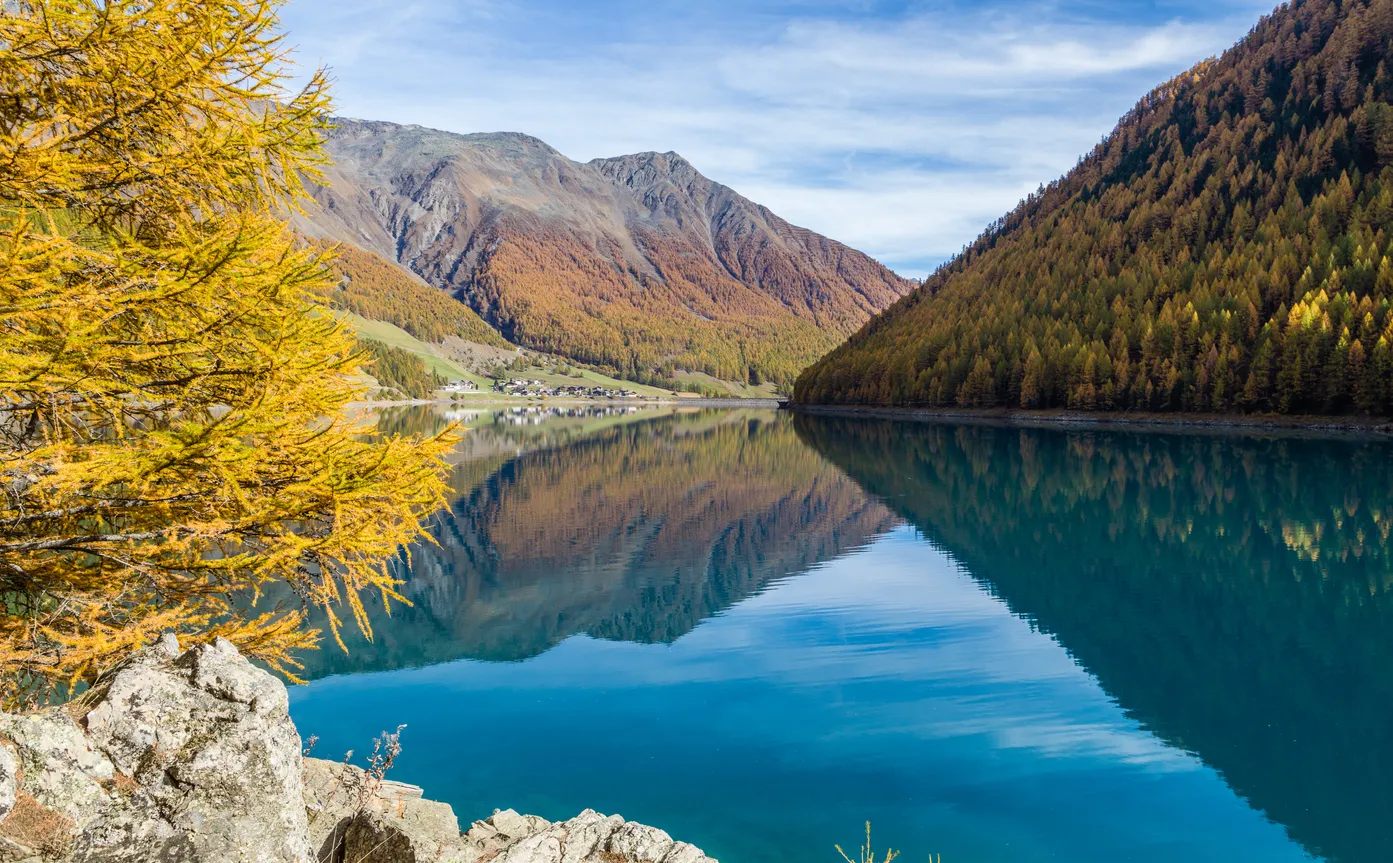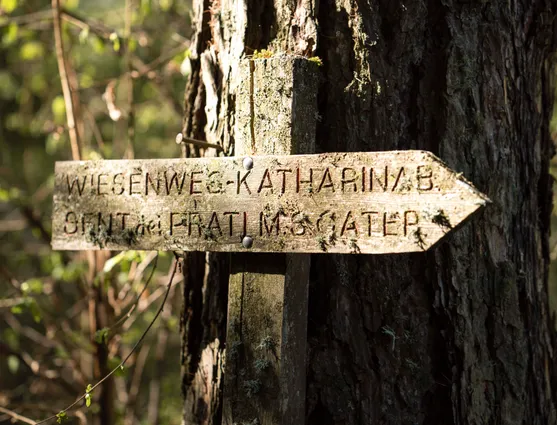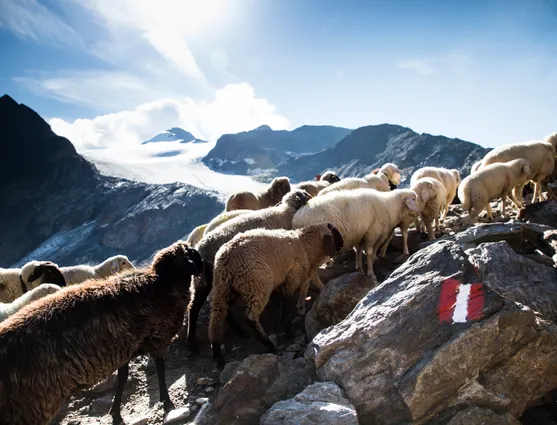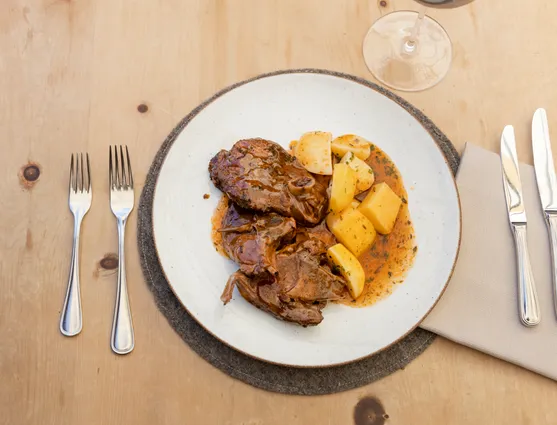This story begins at the foot of the majestic castle of a mountaineering legend. And it ends in the icy heights of the glacier that once revealed a mystical mummy: anyone who visits South Tyrol's Schnalstal Valley must constantly strive uphill and always travels through time. Despite its world-famous inhabitants, this corner of South Tyrol is hardly known, which loyal regulars and residents consider a great blessing. The Schnalstal Valley is a microcosm, a small world of its own, where the clocks still tick to the rhythm of the people who fill it with life. And with tradition, culture, and cuisine. The 20-kilometer-long valley begins in the almost Mediterranean-like expanse of the Vinschgau Valley, with Messner's Juval Castle towering like a guardian at the entrance to the valley.
The valley of five villages and the talking farm
The villages of Schnals present themselves as dissimilar sisters: the exposed Katharinaberg with its church on the rock and the devout silence of the Carthusian monastery in Karthaus stand in wonderful contrast to the lively “Unser Frau,” the charming village in the middle of the valley, which dedicates an open-air museum to Ötzi. Just before that, this is where I am: the Oberraindlhof. Since 1581. As a place to stay for those seeking something special. As a genuine South Tyrolean inn, where every dish is served with a living tradition. Onward to Vernagt, which is mysterious and contemplative, not least because of the reservoir that once replaced houses and farms. Those who spot the old church tower are lucky. Only when the water level is low do parts of the sunken village appear. Finally, there is Kurzras, the sporty one. Here, skiers make beautiful turns on the glacier snow at over 3,000 meters. And then it's not far to the ancient ice that kept the secret of the wounded hunter for more than 5,000 years.
Schnols ibr Olls
This saying may seem somewhat archaic and is hardly understandable. The literal translation “the Schnalstal above all else” would fall far short and does not capture the essence of the deep attachment of the Schnalstal population, which they carry with these lines on their lips and in their hearts. Full of pride and sometimes stubbornness, but overflowing with love. Visitors here can feel it. All of it. And so the “Schnolser” (people from the valley) share it freely. And when you ask my people where the most beautiful part of the Schnals Valley is and what visitors should definitely do and not do, their eyes light up and they gush:
- Hike a section of the Merano High Mountain Trail
- Explore the Pfossental valley in the “Texelgruppe” nature park
- Eat a dish made with Schnalser sheep
- Climb the local mountain or summit to the “Schröfwand”
- Witness the return of the sheep (transhumance)
- sitting in an old panelled parlour
- visiting the new Transhumance Campus
- “flying” with the Schnals Valley Glacier Cable Car
- discovering a glacier cave with a mountain guide
- enjoying a wine tasting with Helmuth Raffeiner
- trying Schnalser Schneemilch (a delicious dessert)
- slip into a felt slipper made from Schnals sheep's wool and never take it off again
- ...
All that remains is to wish the valley, the people of Schnals, and their guests that the films shot here, such as “Everest,” “Das finstere Tal” (The Dark Valley), “Heart of Stone,” and “Tigers Nest,” never cause a media sensation or even hype on social media. Because the peculiar sleepiness, the rugged beauty of the mountains, and the multi-layered characters of the inhabitants are great cinema enough.



